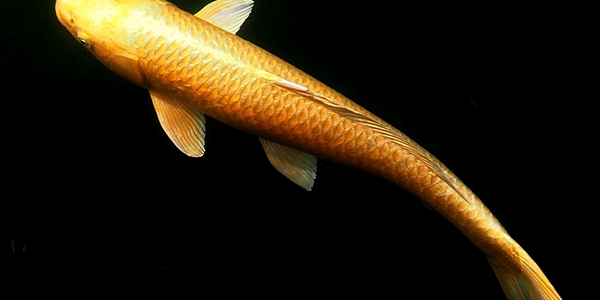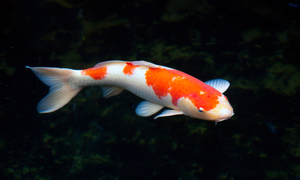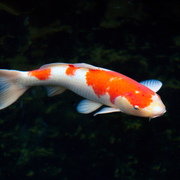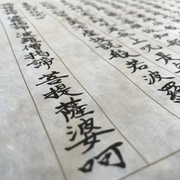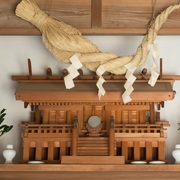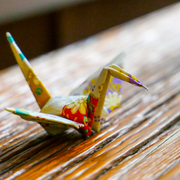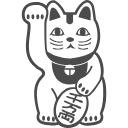Nishiki-goi (colored carp) is popular abroad, but the details of judging show and the average price range are not familiar with ordinary people.
What is Judging Show?
A judging show of Nishiki-goi (colored carp) is the event for breeders and enthusiasts to introduce the achievements of growing Nishiki-goi with great care for a long time and to compete its beauty.
Also, a judging show provides the information about breeding of Nishiki-goi, promoting of breed improvement, feeding techniques and quality improvement, and works as the platform of exchanges among breeders, dealers, and enthusiasts from all over the world.
In addition, a judging show now takes place abroad, where not only Nishiki-goi produced in Japan, but also ones abroad are exhibited, which makes it popular.
Now, judging shows in and outside Japan contribute to spread the name of “NISHIKI-GOI” as the international brand, not as the “Japanses Nishiki-goi”.
3 Points of Beautiful Nishiki-goi
The main points of the beauty of Nishiki-goi differ from each breed, but are generally “pattern”, “figure” and “quality”, which are evaluated at judging shows.
The beauty is the most important on the “pattern” of Nishiki-goi.
Among the various patterns, understanding the points of “Kohaku (red and white)” pattern will help you to see the beauty of other patterns too.
For example, in case of Nishiki-goi with “Kohaku” pattern, a red spot on the head called as “the first point” is very important to evaluate its beauty.
The one on the back is “the second”, the one on the tail “the third”. The basic criterion is that the point of a tail is white.
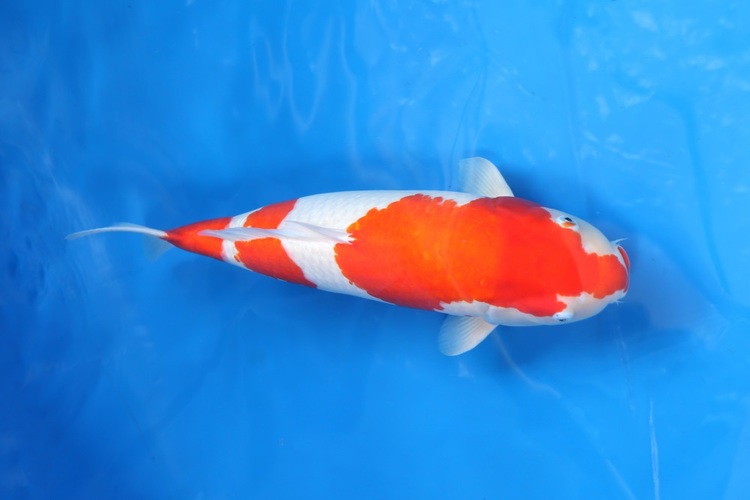
“Figure” is also important essence of Nishiki-goi’s beauty.
The figure of Nishiki-goi is “spindle-shaped”, which is column shaped, thick and rounded.
The balance of 3 parts; head, body and tail, is important to evaluate the beauty.
Moreover, the “quality” referring to the base color of Nishiki-goi body is also necessary for its beauty.
For example, in case of Nishiki-goi with red and black patterns on the white base, bright white of the base and clearly-outlined patterns of red and black are highly evaluated.
Generally, the base color of Nishiki-goi body comes out vividly at the age of 10.
Judging Shows hosted by 3 organizations
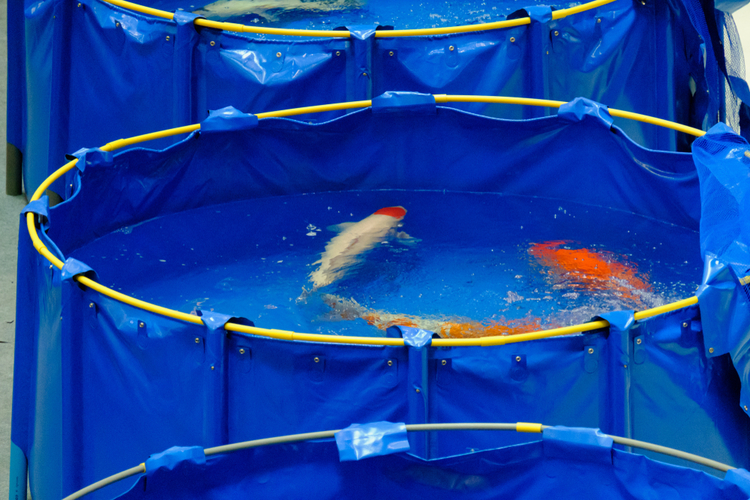
Although mainly participants in judging shows held in Niigata prefecture were breeders before and after the war, enthusiasts in and outside Japan can join today.
There are some judging shows where you can send your own Koi (carp), which have Koi from foreign enthusiasts.
Main judging shows are hosted by 3 organizations; “All Japan Nishikigoi Promotion Association”, “Zen Nippon Airinkai (ZNA)” and “Zen Nihon Rinyukai”.
3 Judging Shows by “All Japan Nishikigoi Promotion Association”
This organization was established by Nishiki-goi breeders and dealers and holds about 600 companies as its members not only in Japan, but in European, American and Asian countries.
Each of 3 judging shows; “All Japan General Nishiki-goi Judging Show”, “Nishiki-goi National Young Koi Judging Show” and “International Young Nishiki-goi Judging Show” is organized once a year.
- “All Japan General Nishiki-goi Judging Show”
It has already been held almost 50 times.
The participants are mainly breeders and dealers, but many buyers and enthusiasts from the world have visited to it.
Small and medium-sized Nishiki-goi in a plastic bag, large one in a pool are exhibited by breeders.
- “Nishiki-goi National Young Koi Judging Show”
This judging show is held to improve breeding techniques of Nishiki-goi, to interact and to promote international goodwill.
Nishiki-goi grown by Japanese breeders outsourced by foreign producers and enthusiasts, are also evaluated.
- International Young Nishiki-goi Judging Show
This judging show has been held to promote young fish easy to breed and introduce its techniques, which comes to spread various information about handy Nishiki-goi and then contribute to develop enthusiasts’ network and international exchange.
J udging Show by “Zen Nippon Airinkai”
“Zen Nippon Airinkai” is the enthusiasts’ organization based in Beppu, Oita prefecture. Local branches host the show once a year.
This judging show has been held more than 50 times.
J udging Show by “Zen Nihon Yurinkai”
“Zen Nihon Yurinkai” was formed by enthusiasts with the purpose of widening the Nishiki-goi network.
It hosts “National Nishiki-goi Judging Show” for members, and “Little Love Judging Show” to widen its network.
Price Range of Nishiki-goi
The prices of Nishiki-goi do not have any fair price and criteria, which depend on buyers.
Its price is decided based on the offered price from a buyer as same as antiques and Bonsai plants.
Once a seller agrees with the offered price by a buyer, the price is decided and the deal is made.
In short, the price of Nishiki-goi is set by negotiation between a seller and a buyer based on the offered price, which means the price range differs from sellers and buyers.
Moreover, the range varies from buyers’ thoughts and feelings.
H ow to Decide the “Reference” Price
The price of Nishiki-goi does not have any criteria and depends hugely on a buyer’s offer, but at judging shows, pricing is decided by the detailed evaluations.
It is decided by evaluations of a figure, a basic pattern and its coloring, and such details of Nishiki-goi exhibited at a judging show.
Needless to say, highly-evaluated Nishiki-goi is priced “high”, but the price differs from each show, which does not set any criteria on deciding prices.
As reference prices, “Sandan Kohaku (three red and white)”, which refers to Himon Hanten* at 3 parts, is popular and high-class breed among Nishiki-goi breed called “Danmono”.
*Himon Hanten: Red-colored spot
The average price range of general Kohaku breed is around 2,000 yen for 20cm-long and around 5,000 yen for 40-50cm-long.
However, as for “Sandan Kohaku”, depending on the patterns of Himon Hanten, the average price range is more than hundreds of thousand yen.
As Nishiki-goi does not have any fair price and the average price range, when beginners without enough knowledge would like to buy Nishiki-goi from dealers, they may buy it at the asking price of a dealer.
This is why it would be better for beginners to buy Nishiki-goi after gaining “own criteria of its beauty”.
S elect by “Love”, not by Prices
The Nishiki-goi you like is not always expensive.
Surely, you can select the one with the high price, but it may be more important to have love to find “your best Nishiki-goi” regardless of its price.
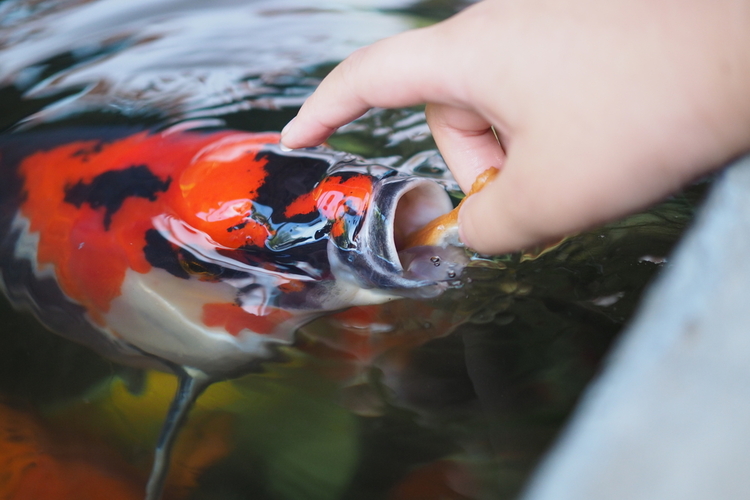
Conclusion
Now, why don’t you contribute to preserve and improve Japanese culture through Nishiki-goi by finding the one you like at judging shows and by interacting with visitors and participants there?

